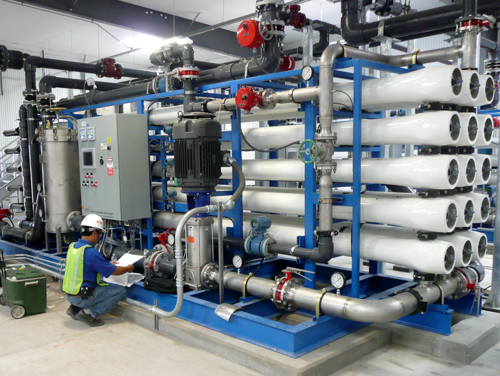Comprehensive PFAS Management in Residential Areas
Wiki Article
Advanced Methods for Efficient PFAS Contamination Elimination
The relentless difficulty of PFAS contamination necessitates the exploration of advanced removal approaches that can successfully attend to these dangerous compounds. Ingenious modern technologies, such as innovative oxidation procedures and various adsorption methods, have emerged as appealing services in mitigating PFAS from affected settings.Recognizing PFAS Characteristics
Although per- and polyfluoroalkyl substances (PFAS) have actually been extensively used in various commercial and customer items because of their distinct properties, their perseverance in the environment postures substantial obstacles to public wellness and safety and security. PFAS are a team of artificial chemicals characterized by a carbon-fluorine bond, among the best chemical bonds understood, which adds to their remarkable stability and resistance to deterioration. This stability enables PFAS to accumulate in the environment and living organisms, bring about prospective adverse wellness results.These same properties add to their environmental persistence, as PFAS do not easily damage down with all-natural procedures. Understanding the chemical properties of PFAS is crucial for establishing effective approaches to manage and alleviate their environmental impact.
Ingenious Remediation Technologies
The persistence of PFAS in the atmosphere has actually spurred the advancement of innovative removal modern technologies focused on successfully eliminating these impurities from impacted ecological communities. Among the most appealing techniques are sophisticated oxidation processes (AOPs), which make use of effective oxidants to damage down PFAS compounds right into much less dangerous compounds. AOPs can be tailored to target details PFAS frameworks, enhancing their efficiency.An additional arising innovation is the use of adsorption media, such as triggered carbon and ion exchange resins, which can selectively capture PFAS from infected water. These materials have revealed considerable removal efficiencies, although regular replacement and regrowth are required to keep efficiency.
Membrane layer filtration methods, including reverse osmosis and nanofiltration, are also acquiring grip in PFAS removal. These methods can effectively separate PFAS from water, giving a sensible option for treating contaminated resources. Furthermore, thermal therapy techniques, such as incineration, can break down PFAS into non-toxic by-products, though they require mindful administration to manage exhausts.
Collectively, these ingenious remediation technologies stand for considerable developments in the ongoing fight against PFAS contamination, supplying numerous techniques to recover affected environments and shield public health and wellness.

Bioremediation Strategies
Bioremediation methods offer a promising approach to addressing PFAS contamination by harnessing the all-natural abilities of bacteria to deteriorate these consistent compounds (m270 waste management). This method involves using germs, fungis, and various other microbes that can metabolize or change PFAS compounds into much less unsafe resultsRecent developments in molecular biology and environmental microbiology have actually boosted our understanding of microbial neighborhoods and their prospective roles in PFAS destruction. Scientists are actively exploring details stress of bacteria, such as Pseudomonas and Bacillus, which have actually shown the ability to damage down certain PFAS substances.
In situ bioremediation strategies, where microorganisms are boosted straight in polluted environments, can be specifically reliable. This method frequently involves the application of nutrients or electron contributors to advertise microbial development and activity. Additionally, ex situ techniques, such as bioreactors, enable regulated conditions that can optimize destruction prices.
Despite the pledge of bioremediation, obstacles remain, consisting of the complex nature of PFAS substances and the need for considerable field testing - m270 waste management. Proceeded r & d will be critical to fine-tune these techniques and assess their efficiency in varied ecological contexts
Adsorption and Purification Approaches
Resolving PFAS contamination often involves employing adsorption and filtration methods, which are designed to remove these persistent chemicals from water and soil. Among the various techniques, activated carbon adsorption is widely utilized due to its high area and porosity, allowing efficient trapping of PFAS molecules. Granular triggered carbon (GAC) systems are specifically preferred look at this now for dealing with large volumes of polluted water, while powdered triggered carbon (SPECIAL-INTEREST GROUP) can be used for smaller-scale applications.Ion exchange materials also show guarantee in PFAS removal, working by trading PFAS ions with much less harmful ions in the water. This technique has actually shown efficiency in concentrating PFAS compounds, promoting their succeeding elimination. Additionally, membrane filtration strategies, such as reverse osmosis and nanofiltration, operate by utilizing semi-permeable membranes to separate PFAS from water, successfully reducing their focus.
While these approaches are effective, they need to be thoroughly picked based upon the details PFAS substances existing and the ecological context. Continuous developments in products scientific research and design are causing the advancement of unique adsorbents and filtering systems that boost elimination effectiveness and minimize operational expenses, consequently boosting total removal initiatives.
Regulatory and Plan Considerations
Exactly how can efficient governing frameworks improve the monitoring of PFAS contamination? my response Detailed policies are important to ensure a worked with and robust action to the difficulties posed by per- and polyfluoroalkyl compounds (PFAS) Rules can establish clear guidelines for tracking, reporting, and remediating PFAS-contaminated websites, fostering accountability among markets and public entities. (m270 waste management)
In addition, economic incentives and gives can be incorporated into policies to urge the adoption of sophisticated remediation innovations. Policymakers ought to also focus on r & d, making sure that emerging techniques for PFAS elimination are validated and applied successfully.
In addition, public understanding and involvement are vital components of any kind of regulatory approach, equipping neighborhoods to advocate for their health and wellness. Ultimately, a well-structured governing environment will not just boost the management of PFAS contamination however likewise advertise lasting methods that check that protect future generations.
Final Thought
In recap, the intricacy of PFAS contamination necessitates the adoption of sophisticated remediation approaches. Innovative innovations such as advanced oxidation procedures, adsorption methods, and membrane filtration have demonstrated substantial effectiveness in getting rid of these persistent compounds from infected water sources. In addition, governing structures must develop to sustain the implementation of these innovations, making certain safe and effective administration of PFAS pollutants. Continued r & d in this field remain important to attending to the obstacles postured by PFAS contamination.Report this wiki page